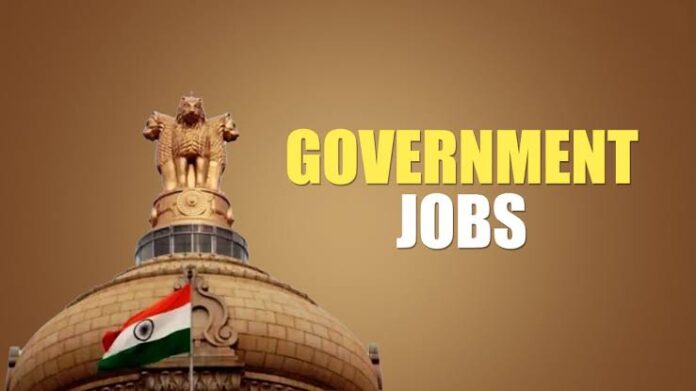India, a nation with a burgeoning youth population, grapples with the persistent challenge of unemployment. While economic growth has been significant, the creation of formal, secure jobs has not always kept pace with the aspirations of millions. In this context, the concept of “One Family, One Job” (OFOJ) emerges as a compelling idea, offering a potential pathway to alleviate poverty, enhance financial stability, and promote equitable development across the country.
The Genesis and Existing Models
While a nationwide “One Family, One Job” scheme by the central government is not currently in place, the idea has found traction at the state level. Notably, Sikkim implemented a “One Family One Job Scheme” in 2019, aiming to provide government employment to one member from every family that does not already have a government employee. Haryana also initiated a similar scheme in 1992.
These state-level initiatives typically target unemployed or underemployed individuals from economically weaker sections, offering employment in various roles, often at Group C and D levels.
The core objective of such schemes is to address the fundamental need for a stable income and job security within a household. For many Indian families, a government job is not merely a source of livelihood but a symbol of social security, prestige, and a guaranteed future, complete with benefits like pensions, healthcare, and housing allowances.
The Promise of OFOJ
Implementing a widespread OFOJ policy across India could yield several significant benefits:
Poverty Alleviation: By ensuring at least one stable income per family, OFOJ could lift countless households out of poverty, providing a safety net and empowering them to meet their basic needs and invest in their future.
Reduced Unemployment: While not a panacea, a well-structured OFOJ could significantly reduce the overall unemployment rate, particularly in rural and semi-urban areas where formal job opportunities are scarce.
Enhanced Financial Stability: A steady government income provides financial predictability, allowing families to plan for education, healthcare, and other essential expenses without the constant fear of economic uncertainty.
Improved Social Well-being: Economic security often translates into improved social indicators, including better health outcomes, reduced migration to urban centers, and greater community stability.
Boost to Local Economies: Increased disposable income at the household level can stimulate local demand and contribute to the growth of small businesses and services.
Skill Development and Empowerment: Many OFOJ schemes incorporate skill development programs, training beneficiaries for specific roles and enhancing their employability.
Challenges and Considerations
While the concept holds immense promise, a nationwide implementation of OFOJ presents significant challenges that require careful consideration:
Fiscal Burden: Providing government jobs to every family without one would entail a monumental fiscal burden on the state exchequer. The sheer number of potential beneficiaries could strain government budgets.
Job Availability and Quality: India’s government sector, while large, may not have enough suitable positions to accommodate such a vast number of individuals. Creating artificial or low-productivity jobs could lead to inefficiencies. The focus would need to be on creating meaningful roles that contribute to public service.
Fairness and Meritocracy: Ensuring fairness and transparency in the selection process would be crucial to avoid accusations of nepotism or political favoritism. Maintaining meritocratic principles while offering opportunities to deserving families would be a delicate balance.
Impact on Private Sector Employment: While the aim is to provide a safety net, an overemphasis on government jobs could potentially disincentivize entrepreneurship and private sector employment, which are vital for long-term economic growth.
Skill-Job Mismatch: Many unemployed individuals may lack the specific skills required for available government positions. Robust skill development and training programs would be essential to bridge this gap.
Sustainability: The long-term sustainability of such a large-scale program, particularly in terms of pension liabilities and recurring costs, would need meticulous planning and financial foresight.
The Way Forward
Instead of a blanket “one government job per family” mandate, a more nuanced and sustainable approach might involve:
Targeted Schemes: Focusing on specific vulnerable groups and regions with high unemployment rates, similar to existing state-level initiatives.
Hybrid Models: Exploring public-private partnerships where the government facilitates training and placement in private sector jobs, alongside limited government appointments.
Emphasis on Self-Employment and Entrepreneurship: Investing heavily in schemes like the Prime Minister’s Employment Generation Programme (PMEGP), Startup India, and Stand-Up India to foster self-reliance and job creation through entrepreneurship.
Strengthening Existing Employment Programs: Enhancing the effectiveness and reach of schemes like MGNREGA, which provides guaranteed rural employment, and various skill development initiatives.
Reforming Government Recruitment: Streamlining and expediting the existing government recruitment processes to ensure timely and transparent hiring.
Investment in Infrastructure and Industry: Creating an environment conducive to private sector growth and job creation by investing in infrastructure, simplifying regulations, and promoting ease of doing business.
The idea of “One Family, One Job” resonates deeply with the aspirations of many Indians for economic security. While a nationwide, direct implementation faces formidable hurdles, the underlying principle of ensuring basic financial stability for every family is a noble goal. A pragmatic approach, combining targeted government interventions with robust support for private sector growth and skill development, holds the key to building a more equitable and prosperous India.

